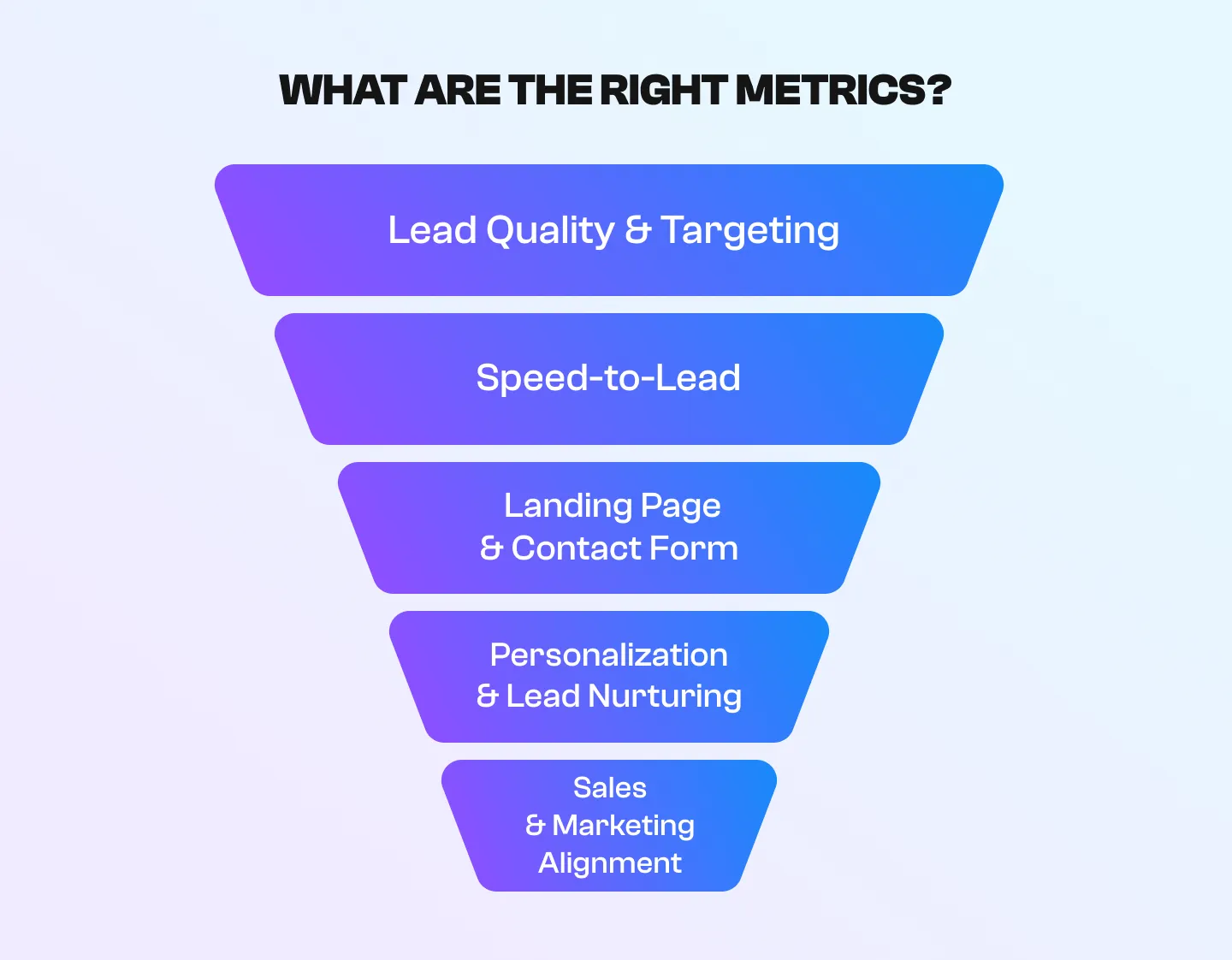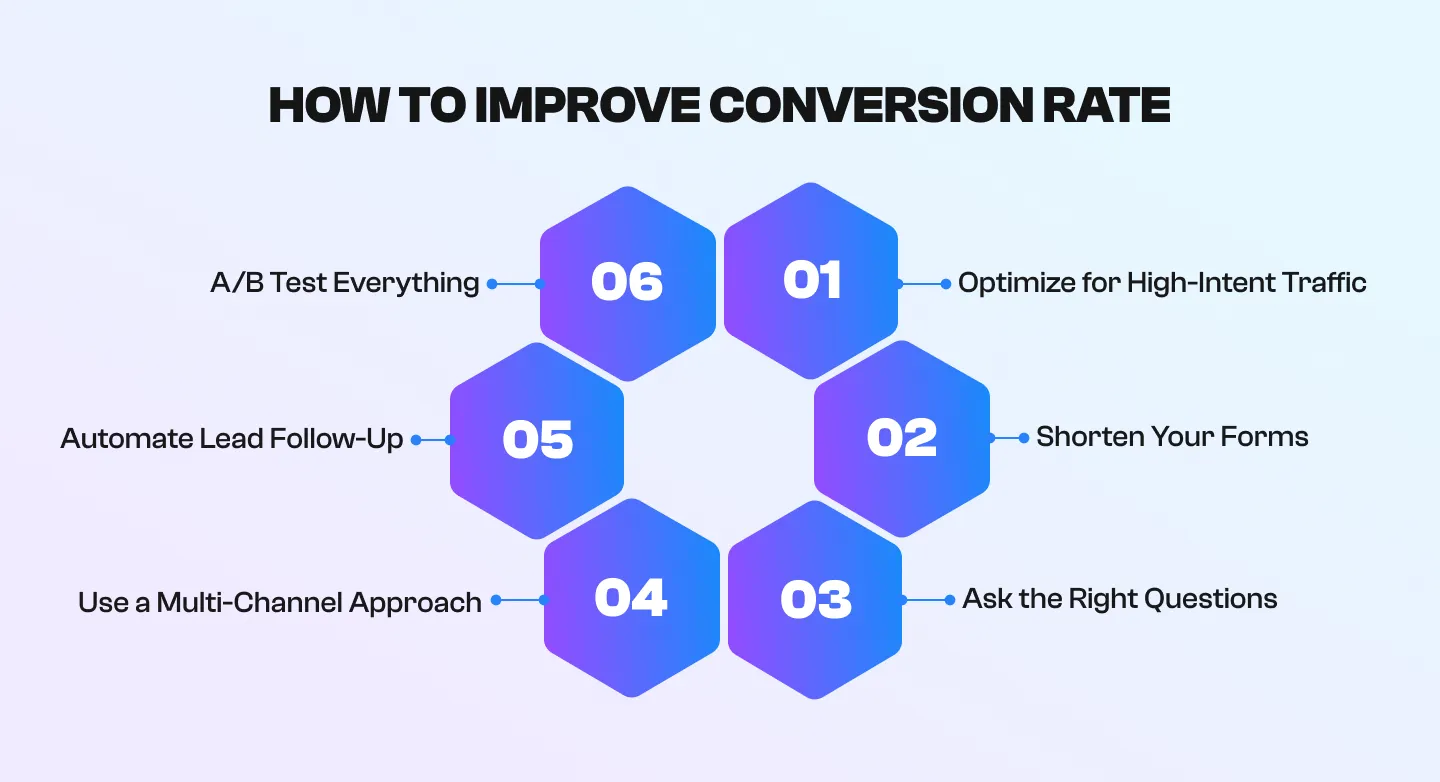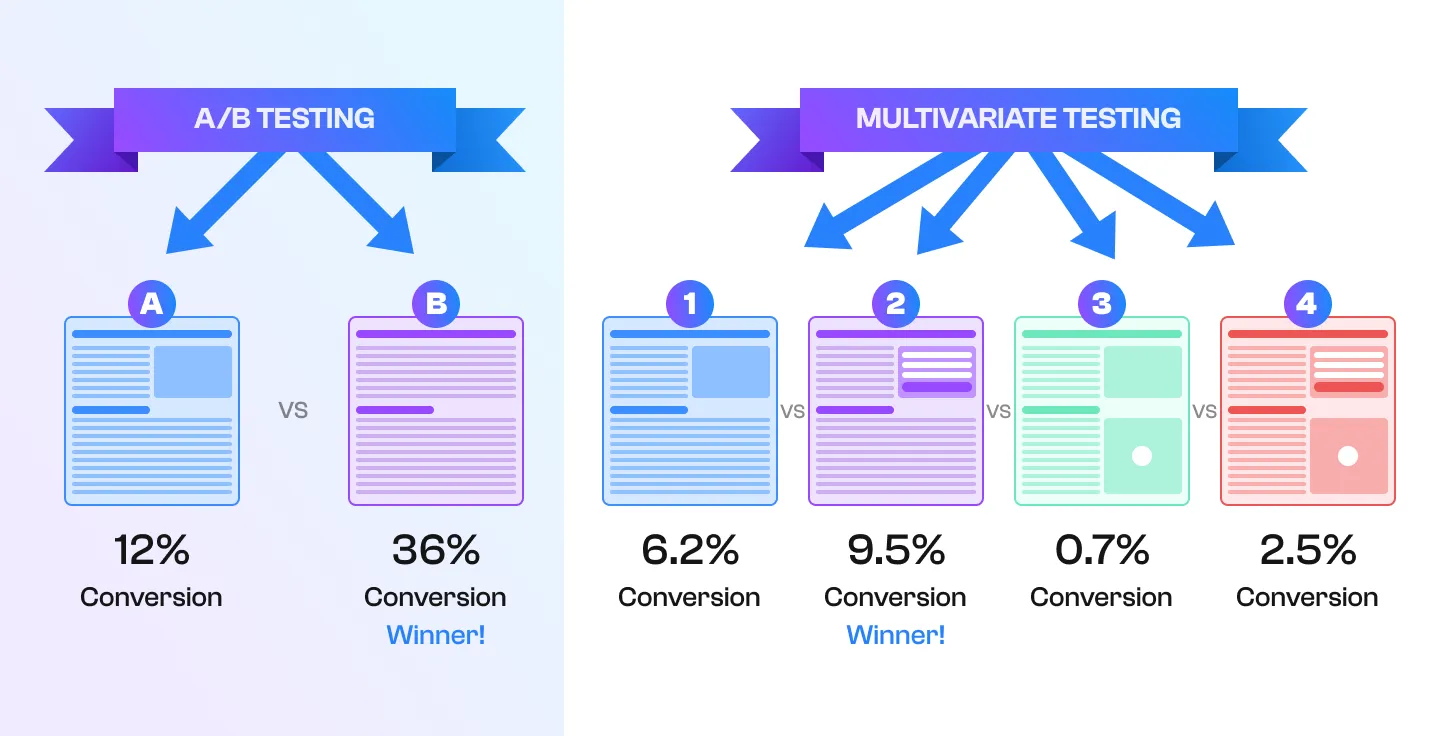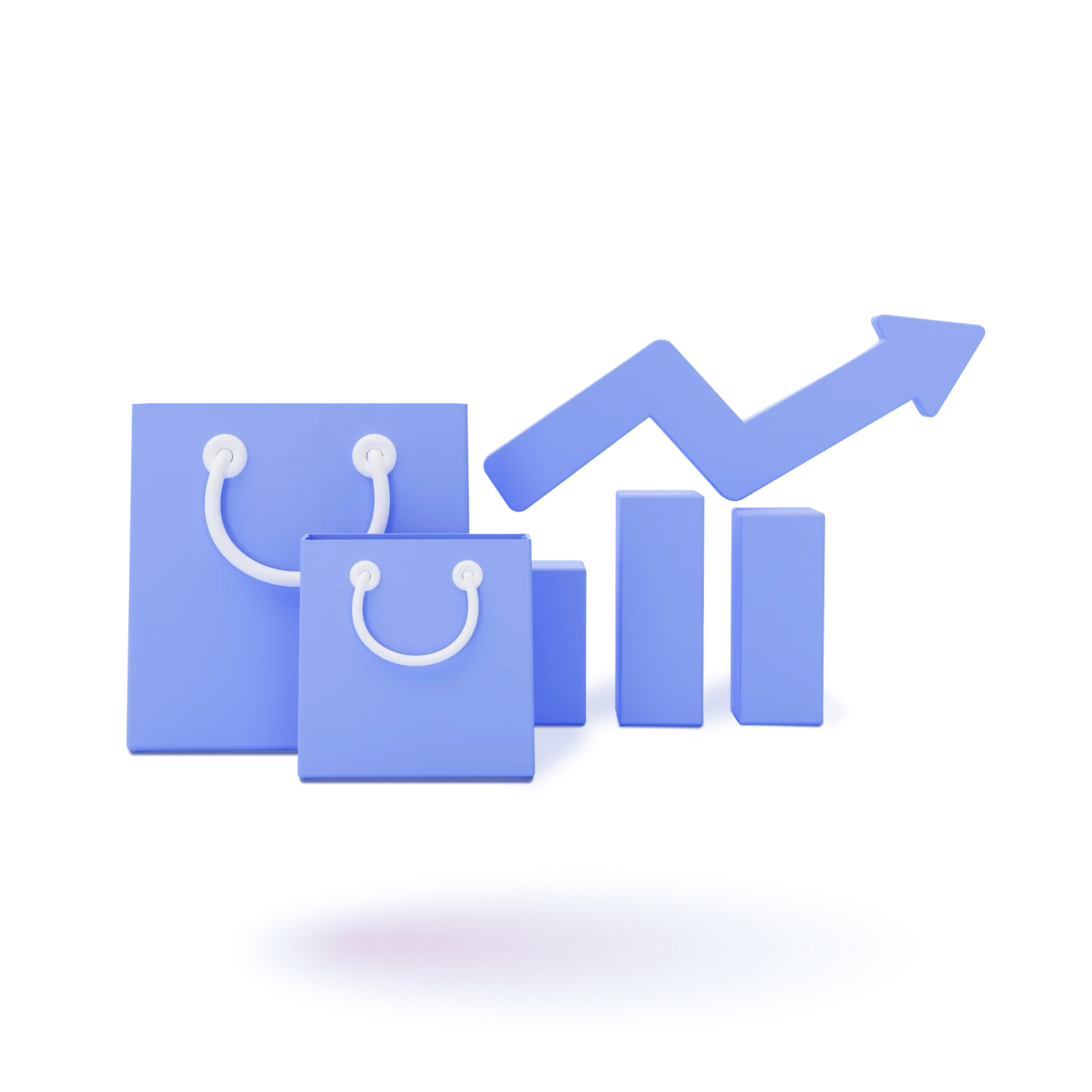Two teams. Two lead generation campaigns. One crushed it with a 10% lead conversion rate; the other barely scraped 1%. What made the difference?
Imagine this: Company A runs a lead generation campaign with a strong offer, a well-optimized landing page, and clear calls to action. Their b2b conversion rate is an impressive 10%. Company B, on the other hand, invests in ads but sends traffic to a slow, cluttered website with vague messaging. Their lead conversion rate is a painful 1%.
So, what separates success from failure? More importantly, what is a good lead generation conversion rate, and how can you improve it? Let’s break it down.
What’s Considered a “Good” Lead Generation and Conversion Rate?
There’s no universal answer, but industry benchmarks give us a solid starting point. A lead generation conversion rate isn’t just a number—it directly reflects the effectiveness of your marketing efforts. If you bring in traffic, you’re burning money, but no one converts. If your b2b conversion rate is high, you maximize revenue without increasing ad spending.

At its core, a lead generation conversion rate is the percentage of prospects who move to the next stage of your funnel. This could be:
- Website visitor → Lead (someone fills out a form, downloads a guide, or signs up for a webinar)
- Lead → MQL (Marketing Qualified Lead—someone who has engaged enough to be considered a potential buyer)
- MQL → SQL (Sales Qualified Lead—someone ready for direct sales outreach)
Each stage has its lead conversion rate, and optimizing every step is key to improving your overall lead generation performance.
Why Lead Conversion Rates Matter
A low b2b conversion rate means spending money on ads, SEO, or content marketing but not getting enough return. A high conversion rate means you’re getting more customers from the same budget.
Think about it: if you’re running a $10,000 ad campaign and converting at 2%, you’ll generate far fewer leads than a competitor converting at 8%—without spending a dollar more.
Valeriya Krylova, a lead conversion optimization specialist, puts it this way:
“The biggest mistake I see? Companies are chasing more leads instead of focusing on converting the ones they already have. Before scaling traffic, make sure your funnel is airtight.”
If you’re getting leads but they aren’t turning into customers, the problem isn’t traffic—it’s lead conversion. Let’s look at what affects your numbers and how to improve them.
Download our free PDF guide and discover proven strategies to optimize your lead generation and boost engagement.
Industry Benchmarks You Need to Know
What qualifies as a “good” lead generation conversion rate? The answer depends on your industry, traffic source, and overall funnel strategy. But let’s start with some hard numbers.
The Hard Numbers
Average lead generation conversion rates sit around 2.35%, but the top 25% of companies achieve 5.31% or higher (WordStream).
However, lead generation conversion rates by industry may vary:
- SaaS: 3% – 7%
- B2B Services: 2% – 5%
- E-commerce: 1% – 3%
- Finance & Insurance: 5% – 10%
If your numbers are below these benchmarks, there’s room for improvement. If you’re exceeding them, you’re likely doing something right—but there’s always a way to push further.
Inbound vs. Outbound Lead B2B Conversion Rates
Where your leads come from also plays a huge role. Not all traffic converts the same way.
Organic SEO leads convert at an impressive 14.6%—these people actively search for solutions (MarketingSherpa Research).
Average lead generation conversion rates for outbound methods like cold emails or paid ads are around 1.7% – 2.5%
“A ‘good’ b2b conversion rate depends on your industry and acquisition channel. A 3% rate for B2B SaaS might be excellent, but that’s a sign of trouble in eCommerce. Knowing your industry benchmarks and constantly testing ways to improve.”
Understanding these benchmarks helps set realistic goals, but improving your lead conversion rate is where the magic happens. Let’s examine what moves the needle.
5 Factors That Make or Break Your Conversion Rate
Let’s go back to the two companies from the introduction. What went wrong with the failing team? They weren’t necessarily getting bad traffic, but losing potential leads at every step. Here’s what separates success from failure—and how you can fix the same issues in your campaigns.

1. Lead Quality & Targeting
The Problem: They targeted everyone instead of the right buyers.
The failing company assumed that more traffic meant more lead conversions, so it used generic messaging to attract visitors who were never likely to convert.
The Fix: Narrowing down their Ideal Customer Profile (ICP) increased their lead conversion rate by 40%.
Instead of chasing volume, the successful team refined its targeting. It focused on high-intent audiences—people who needed its product or service. The result? A huge jump in average conversion rates without increasing ad spending.
“More traffic doesn’t mean more lead conversions—better targeting does. The highest-converting campaigns speak directly to the right audience, not everyone.” – Valeriya Krylova
2. Speed-to-Lead (The Golden 5-Minute Rule)
The Problem: The failing team took 24 hours to respond to new leads.
A lead fills out a form, but by the time they receive a response, they have already moved on—or, worse, they have signed with a competitor.
The Fix: Implementing automated responses and immediate outreach cut lead response time to under 2 minutes, boosting b2b conversion rates.
A study by Harvard Business Review found that responding to leads within 5 minutes increases lead conversion chances by 9x. The winning team set up automated emails, chatbots, and instant SMS follow-ups, ensuring no lead was left waiting.
These two factors alone—better targeting and faster follow-up—transformed their results. But three more issues made the difference. Let’s examine them.
3. Landing Page & Form Optimization
A bad landing page can tank your lead conversion rate even if you drive the right traffic and respond quickly. That’s exactly what happened to the failing company—their page was cluttered, slow, and asked for too much information upfront.
Case Study: A finance company reduced its lead form from 10 fields to 5, and its conversion rate jumped from 3.2% to 6.4%. Fewer fields equal less friction.
Best Practices for Higher Lead Conversions
- Clear CTA: A button that says “Get a Free Demo” instead of “Submit” increased lead conversions by 30%.
- Mobile Optimization: With 61% of leads coming from mobile devices, a slow or unresponsive page is a conversion killer.
- A/B Testing Headlines: A simple headline test led to a 27% lift in lead conversions. The takeaway? Small tweaks matter.
4. Personalization & Lead Nurturing
Not all leads are ready to buy immediately, and that’s where nurturing comes in. The failing company relied on generic email blasts, which resulted in a 1% engagement rate—essentially wasted leads.
The Fix:
They switched to a tailored email sequence based on user behavior and saw:
- Open rates jump to 38%
- Lead-to-MQL conversions increase by 22%
Experian says personalized emails generate six times higher transaction rates than generic ones. If you continue to send the same message to everyone, you’ll waste time and reduce lead conversions.
5. Sales & Marketing Alignment (Or Lack of It)
The failing company’s sales and marketing teams worked in silos—marketing sent leads that sales ignored, and sales complained about “bad leads.” Sound familiar?
The Fix:
They implemented a Service Level Agreement (SLA) that defined:
- What qualifies as a sales-ready lead
- How fast must sales follow up
- What feedback do sales give to marketing
The result? Their lead acceptance rate jumped by 37%, meaning more leads became revenue.
These five factors—better targeting, faster follow-up, a stronger landing page, personalized lead nurturing, and sales-marketing alignment—were the difference between failure and a 10% lead conversion rate success story.
Now, how do you put these strategies into action? Let’s get into that next.
How to Improve Your Lead Conversion Rate
By now, you’ve seen how small changes can make a huge difference in lead conversion rates. But how do you turn these insights into a strategy consistently bringing high-quality leads? The key is to focus on traffic quality, form optimization, and multi-channel nurturing—let’s break down each step.

1. Optimize for High-Intent Traffic
Not all website visitors have the same level of interest. Some are casually browsing, while others are actively searching for a solution. The goal is to attract and convert high-intent visitors who are ready to take action.
- One of the best ways to do this is through long-tail keywords. These are more specific search phrases that indicate a higher level of intent. For example, someone searching for “best CRM for small business with automation” is far more likely to convert than someone searching for “CRM software.” Long-tail keywords have been shown to convert 2.5 times better than broad, short-tail keywords.
- Another powerful tactic is exit-intent pop-ups, which appear when visitors are about to leave your site. These can capture leads that might have otherwise bounced. Offering a free resource, discount, or consultation at the right moment can encourage them to stay engaged.
- Remarketing is another key strategy. Many potential leads don’t convert on their first visit, but retargeting ads can bring them back. Whether through Google, Facebook, or LinkedIn, reminding visitors of what they are interested in can significantly increase average conversion rates.
2. Shorten Your Forms, But Ask the Right Questions
Long, complex forms are one of the biggest reasons potential leads abandon a page. But reducing the number of fields isn’t always the right answer—you need to balance ease of use with lead quality.
A B2B case study found that reducing the number of form fields from seven to three increased conversions by 50%. However, blindly reducing fields without a strategy can backfire. Instead, focus on asking only the essential questions upfront. If additional details are needed, use progressive profiling, which gathers more information over time through follow-up interactions.
For example, instead of immediately requiring a job title, company size, and phone number, you can start with a name and email. Later, you can collect more data as the lead engages with your content or responds to emails.
Another key element of form optimization is the call-to-action (CTA). Simple wording changes can have a significant impact. In one test, changing a button from “Submit” to “Get a Free Demo” increased conversions by 30%. The more specific and action-oriented your CTA, the better.
Finally, mobile-friendliness is crucial. More than 60% of online leads now come from mobile devices. If your forms are difficult to fill out on the phone, your conversion rate will suffer. Using auto-fill features and minimizing required typing can improve the user experience and boost completions.
3. Use a Multi-Channel Approach
Many businesses lose leads simply because they aren’t following up effectively. If you’re only relying on a single communication method—like email—you’re missing opportunities to engage leads through multiple touchpoints.
Research shows that leads nurtured through multiple channels convert 20% more often than those only engaged through one. The most effective approach involves a combination of:
- Email sequences: Personalized emails based on lead behavior, such as follow-ups after downloading a resource or attending a webinar.
- Retargeting ads: Display ads that remind leads of what they showed interest in but didn’t act on.
- Chat follow-ups: Text or chatbot interactions for quick engagement and reminders.
- Sales outreach: A well-timed phone call can often be the push a lead needs to move forward.
Successful companies don’t rely on a single channel—they engage leads across multiple platforms and tailor their messaging based on user interactions.
4. Automate Lead Follow-Up Without Losing Personalization
It is essential to follow up with leads quickly, but doing it manually at scale is nearly impossible. This is where automation comes in. However, companies’ biggest mistake is using automation without personalization, which results in robotic, generic messages that fail to engage leads.
A case study showed that when a sales team implemented AI-powered lead scoring and automated, personalized follow-ups, their b2b conversion rate increased by 18%. The key was a mix of smart automation and human touch.
Here’s how to do it effectively:
- Use AI for Lead Scoring: AI tools analyze engagement patterns to prioritize the most promising leads instead of treating all leads the same. This helps sales teams focus on those most likely to convert.
- Automate Initial Follow-Ups: Sending an immediate, well-crafted email or SMS within five minutes of a lead’s inquiry dramatically improves response rates. Tools like HubSpot, ActiveCampaign, and Salesforce can handle this automatically.
- Personalize Every Touchpoint: Just because emails are automated doesn’t mean they should sound robotic. Include the lead’s name, reference their behavior (such as a product page they visited), and tailor the messaging based on their needs.
Many businesses lose leads simply because they respond too slowly or fail to personalize their communication. A well-executed automation strategy ensures no lead falls through the cracks, without sacrificing the human element.
5. A/B Test Everything (And Never Assume You Know Best)
What works today might not work tomorrow. The only way to consistently improve your lead generation and conversion is through A/B testing—comparing two variations of a page, email, or ad to see which performs better.

Even small changes can have a massive impact. In one test, changing a call-to-action (CTA) from “Sign Up” to “Get Started” increased conversions by 21%. Why? Because “Get Started” feels less committed and more action-oriented.
Here are some elements to test:
- CTA Wording & Placement: Try variations like “Claim Your Free Trial” vs. “Start Free Today” to see which drives more sign-ups.
- Form Length: Test a short vs. longer form to find the right balance between lead volume and quality.
- Landing Page Headlines: A powerful headline can make or break a conversion. Test benefit-driven vs. curiosity-driven headlines.
- Email Subject Lines: Open rates directly impact conversions. Testing different subject lines can reveal what resonates best with your audience.
The most successful marketers never assume they know what works best. Instead, they test, measure, and optimize based on real data.
Learn practical ways to reduce your cost per lead without sacrificing quality. Get your free PDF guide now!
Measuring Success: How to Track?
Improving your lead generation conversion rate is only half the battle—you also need to track and analyze your results. Without measuring the right lead conversion metrics, you won’t know whether your efforts are paying off, where leads are dropping off, or how to fine-tune your strategy for better performance.
Many businesses only look at top-level lead conversion metrics, such as total leads generated. While that’s an important number, it doesn’t tell you how many leads are valuable or whether they are turning into customers. A high volume of leads means nothing if they aren’t progressing through your funnel. That’s why tracking average conversion rates at different stages is critical.
Let’s discuss the key lead conversion metrics indicating whether your lead generation strategy is truly effective.
1. Lead-to-MQL Conversion Rate
This metric measures the percentage of total leads that become Marketing Qualified Leads (MQLs). An MQL is a lead with enough interest or engagement to be considered a potential buyer based on predefined criteria such as job title, company size, or actions taken on your website.
Why It Matters
A high lead-to-MQL conversion rate means that your lead generation efforts are attracting the right audience—people who are genuinely interested in your product or service. A low rate, on the other hand, suggests that your targeting, messaging, or lead capture process needs adjustment.
Industry Benchmark
The average lead-to-MQL conversion rate varies by industry and ranges between 30% and 35%. A well-optimized campaign should aim for at least 35% to ensure that most leads are relevant and engaged.
How to Improve It
- Improve audience targeting. Ensure your ads, SEO strategy, and content marketing efforts reach the right people.
- Optimize landing pages. Ensure your forms are clear, your call-to-action (CTA) is strong, and the user experience is seamless.
- Offer compelling lead magnets. High-value content such as e-books, case studies, or free trials can increase engagement and attract more serious leads.
2. MQL-to-SQL Conversion Rate
Once a lead is classified as an MQL, the next step is determining whether they are ready for direct sales engagement. The Sales Qualified Lead (SQL) conversion rate is involved here. An SQL is a lead that meets specific criteria, indicating they are ready for a conversation with sales. These include multiple website visits, requesting a demo, or engaging with emails.
Why It Matters
A high MQL-to-SQL conversion rate means that your marketing efforts bring in high-quality leads—people interested in buying. A low rate indicates that your lead qualification process may not effectively filter out unqualified leads.
Industry Benchmark
The average MQL-to-SQL conversion rate ranges from 13% to 20%, but top-performing companies achieve 20% or higher.
How to Improve It
- Refine lead scoring. Use behavioral and demographic data to qualify leads more accurately.
- Segment and personalize follow-ups. Not all MQLs are the same, so tailor your approach based on their level of engagement.
- Improve speed-to-lead. The faster your sales team contacts an MQL, the higher the chances of converting them into an SQL. Research from Harvard Business Review shows that responding to a lead within five minutes increases conversion chances by nine times compared to waiting 30 minutes or more.
3. Cost Per Lead (CPL)
This metric tracks the cost of acquiring each lead. It is calculated by dividing the total marketing spend by the number of leads generated.
Why It Matters
Understanding your CPL helps determine whether your marketing efforts are cost-effective. A high CPL may indicate inefficient targeting, expensive advertising channels, or poor b2b conversion rates.
Industry Benchmark
CPL varies widely by industry:
- B2B SaaS: $50–$200 per lead
- Finance & Insurance: $75–$250 per lead
- E-commerce: $10–$50 per lead
While lowering CPL is important, it should never come at the cost of lead quality. A cheaper lead that never converts is more expensive in the long run than a high-quality lead that turns into a customer.
How to Improve It
- Optimize ad targeting. Use audience segmentation to refine your paid campaigns.
- Improve conversion rates. Higher average conversion rates mean lower CPL, as you get more leads from the same budget.
The Best Tools for Tracking & Optimizing Conversions
Tracking your lead generation success requires the right tools. Without accurate data, knowing where you need to improve is impossible. Here are some of the best platforms for measuring and optimizing your conversion rates:
1. HubSpot
A powerful marketing and sales automation tool that tracks leads throughout the funnel. It helps with lead scoring, automated follow-ups, and detailed reporting on the average conversion rates at each stage.
2. Google Analytics
Essential for tracking website traffic and user behavior. Google Analytics shows where your leads are coming from, how they interact with your pages, and which sources generate the highest conversions.
3. Salesforce
A robust customer relationship management (CRM) tool that helps sales teams manage leads, track engagement, and measure the effectiveness of marketing campaigns.
4. Marketo
Great for lead nurturing and automation. Marketo helps personalize campaigns based on lead behavior, which can improve b2b conversion rates across email, ads, and web interactions.
Conclusion
The difference between success and failure in lead generation isn’t about traffic but conversion. The winning team focused on high-quality leads, fast follow-up, optimized landing pages, personalized nurturing, and strong sales-marketing alignment. By refining every step of their funnel, they turned more leads into customers and maximized their return on investment. Meanwhile, the failing team learned that even high traffic won’t drive revenue without a solid conversion strategy.
The best lead generation strategy isn’t about collecting the most leads but converting the right ones. Businesses that consistently improve their targeting, follow-up speed, landing pages, and lead nurturing will consistently outperform those that focus solely on volume. More traffic isn’t the answer—better conversions are.
Get a free consultation and discover how to turn more leads into customers with better targeting, faster follow-up, and smarter funnel strategies.

